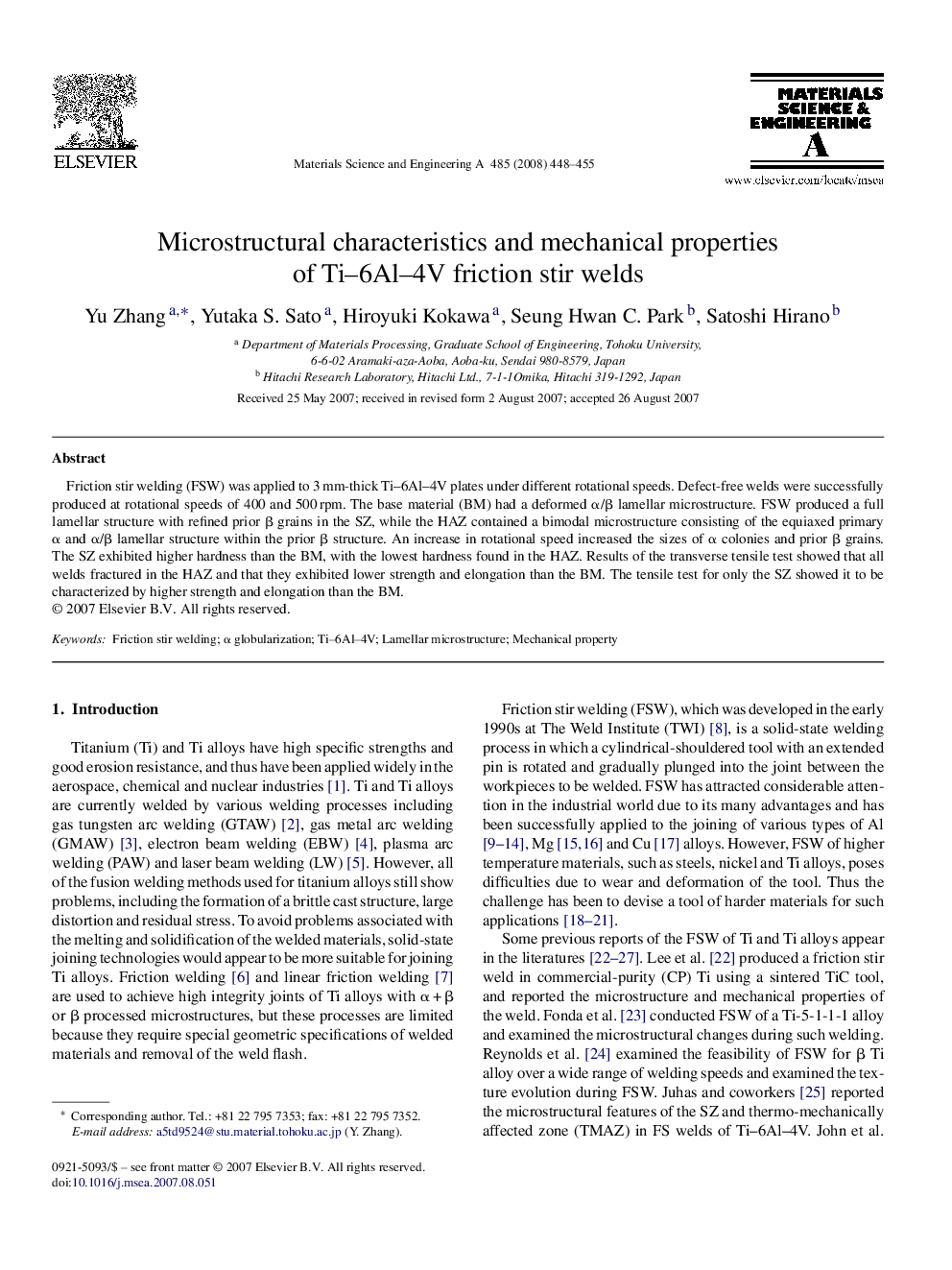| Article ID | Journal | Published Year | Pages | File Type |
|---|---|---|---|---|
| 1582388 | Materials Science and Engineering: A | 2008 | 8 Pages |
Abstract
Friction stir welding (FSW) was applied to 3 mm-thick Ti-6Al-4V plates under different rotational speeds. Defect-free welds were successfully produced at rotational speeds of 400 and 500 rpm. The base material (BM) had a deformed α/β lamellar microstructure. FSW produced a full lamellar structure with refined prior β grains in the SZ, while the HAZ contained a bimodal microstructure consisting of the equiaxed primary α and α/β lamellar structure within the prior β structure. An increase in rotational speed increased the sizes of α colonies and prior β grains. The SZ exhibited higher hardness than the BM, with the lowest hardness found in the HAZ. Results of the transverse tensile test showed that all welds fractured in the HAZ and that they exhibited lower strength and elongation than the BM. The tensile test for only the SZ showed it to be characterized by higher strength and elongation than the BM.
Related Topics
Physical Sciences and Engineering
Materials Science
Materials Science (General)
Authors
Yu Zhang, Yutaka S. Sato, Hiroyuki Kokawa, Seung Hwan C. Park, Satoshi Hirano,
